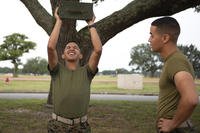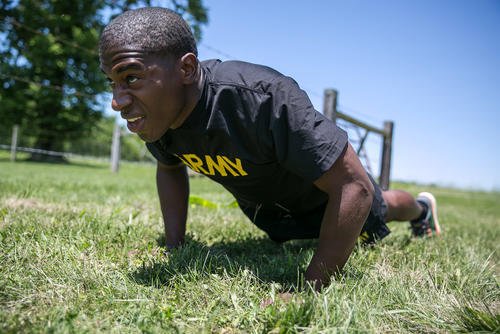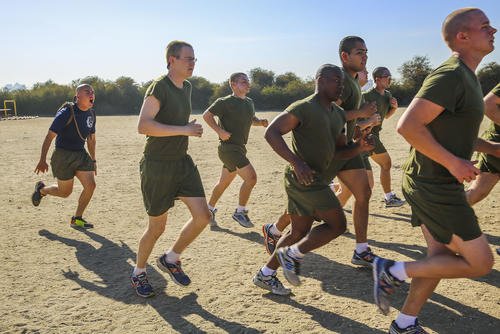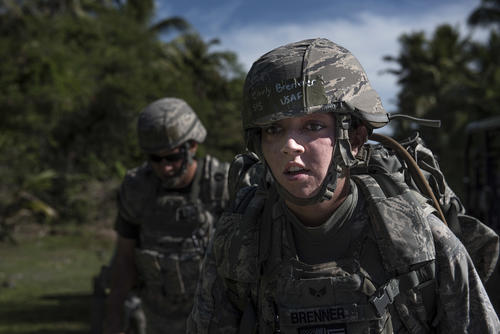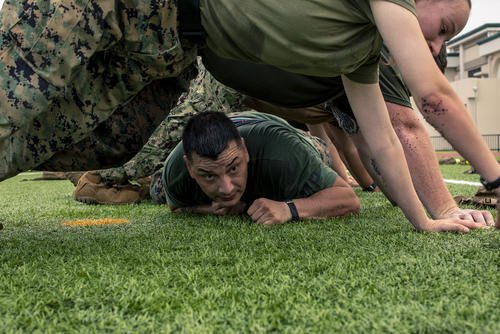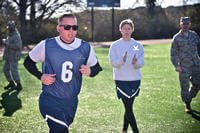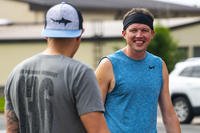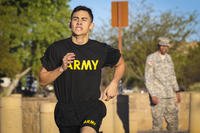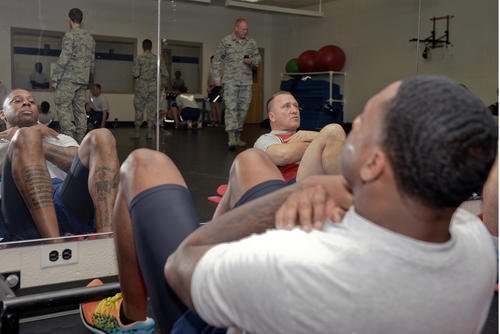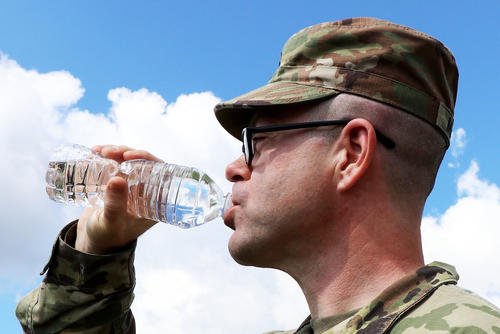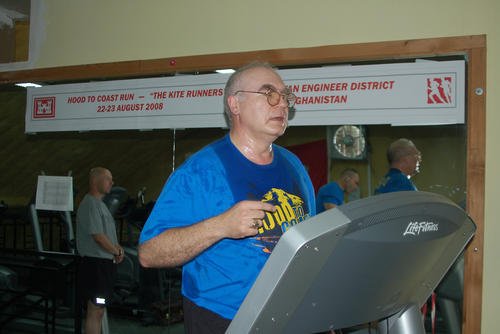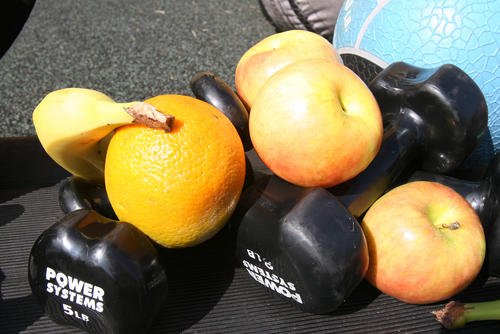Staying fit on a budget and in the comfort of home is achievable, as long as the will to get up and move is there. While fitness at home is easier said than done, you can burn calories, improve your physical condition, lose weight and see results quickly with the following movements.
Here is a question about doing more with less:
Stew,
I have a small set of dumbbells and no other equipment. I need some ideas for exercises I can do at home, as I'm a caregiver and only leave my house on occasion.
Thanks,
James
To achieve any health, wellness or fitness goal, consider incorporating movement throughout the day to break up prolonged periods of sitting.
To lose weight effectively while working out indoors without a lot of equipment, focus on calisthenics and cardio and use dumbbells for accessory movements that target smaller muscle groups, such as this light-weight shoulder workout.
While you can do many exercises with dumbbells, you may want heavier options for some. Adding even 10 pounds to exercises like squats or walking can prove valuable to your calisthenics training.
Read Next: What Service Members Should Do to Prepare for Casualty Evacuations
Try the following as either a full-body workout circuit or do the upper-body exercises one day and the lower-body exercises the day after:
Squats
Work your legs, glutes and core. Do 10 to 20 repetitions of the simple, yet effective, movement of sitting and standing. In fact, when sitting for long periods of time, set an alarm and get up every 45 minutes and do 10 squats throughout the day.
Leg strength has been linked to longevity, so do not skip leg day. Start with three or four sets at first, but as you progress, increase the repetitions in each set and gradually build your total volume of squats in a day to 100 reps (or more).
Lunges
Try five to 10 lunges per leg and hold on to something to help stabilize yourself and use your arms to assist at first. As you improve, you can make lunges more challenging by adding weight or incorporating variations such as walking lunges, reverse lunges, jump lunges and split lunge jumps.
Target your legs, glutes and improve balance. Start with two or three sets at first, but as you progress, increase the number of sets and gradually build your total volume of lunges in a day to 50 reps per leg (or more).
Push-Ups
Start with five to 10 reps and use variations such as knee push-ups or elevated push-ups if you are a beginner. This is a classic stay-at-home exercise to develop the upper body and core strength. When sitting for long periods, set an alarm and get up every 45 to 60 minutes to do 10 push-ups throughout the day. Start with three or four sets at first, but as you progress, increase the repetitions in each set and gradually build your total volume of push-ups in a day to 100 reps (or more).
Bench Dips
Use a chair or coffee table to work your triceps, chest and shoulders. Place your hands on the edge of the desk and drop your hips off the seat by slowly lowering yourself toward the floor by bending your arms. When your arms are at a 90-degree angle, lift yourself back up to your seated position. Repeat for five to 10 reps and build up to three or four sets.
Plank
This classic isometric pose and other variations, including the side plank, up push-up position holds and the downward dog, will work the entire core system (not just abs). Strengthening your core and improving stability will help you with push-ups, carrying weight, walking and many more functional and daily life activities.
Hold the pose for as long as you can and observe the improvement in your time in the position over a short period of practice. Set a goal of one minute and build upon that until you can do a five-minute plank. Then never stop doing this pose and all the other calisthenics above.
Exercises Other Than Walking and Running for Cardio Benefits
The following exercises are more intense than those above, as they include challenging movements, such as getting from the floor to a standing position, jumping and engaging leg muscles. These get the heart pumping and the lungs pushing more air than easy walking.
Mountain Climbers
Think of this as an active plank pose that works the legs and the lungs. Get into the push-up position, but instead of doing push-ups, lift your knees toward your chest as if you were running in that position. Work your core and cardiovascular system in this plank-like position. Start with 30 seconds and gradually build up to multiple sets of one minute as you progress.
Jumping Jacks
A classic cardio exercise that engages your whole body if you can handle jumping. If the bouncing is too much, try replacing the leg movements with high knee lifts as if you were walking 12-inch steps.
High Knees
Try standing in place and lifting your knees as high as you can, as if you were running or walking in place. This exaggerated high knee lift is another way to get the heart pumping and work the hips, core and balance. Start off with sets of one minute and build up to five-minute sets of constant movement spread throughout the day.
Farmer’s Walk
Carry something in one hand and walk around the house, keeping your core tight, torso straight and not leaning to the weighted side. Walking up or downstairs is a better next-level exercise for cardio and leg strengthening. Build up to heavier weights for sets of 1 to 2 minutes.
Burpees
This high-intensity, full-body exercise combines a squat, push-up and jump. Few people enjoy burpees, but they are an effective calorie burner if you can handle the dynamic movement from standing to quickly doing a push-up and jumping back up. Start slowly with a few reps, but work your way to doing one-minute sets for multiple sets.
Dancing
Adding music to this list of exercises will help you feel like moving more, but some days, you can dance as the primary source of activity, which can count as a form of aerobic exercise that can help support weight loss.
You can do a lot in the comfort of your own home and, with a few creative ideas in the Military.com Fitness Section, turn your calorie burn into a fun activity you add to your day as often as you like.
The goal is to keep moving, and as you progress, find variations to make those movements more challenging. This is a form of progressive overload that requires minimal equipment.
Want to Learn More About Military Life?
Whether you're thinking of joining the military, looking for fitness and basic training tips, or keeping up with military life and benefits, Military.com has you covered. Subscribe to Military.com to have military news, updates and resources delivered directly to your inbox.





